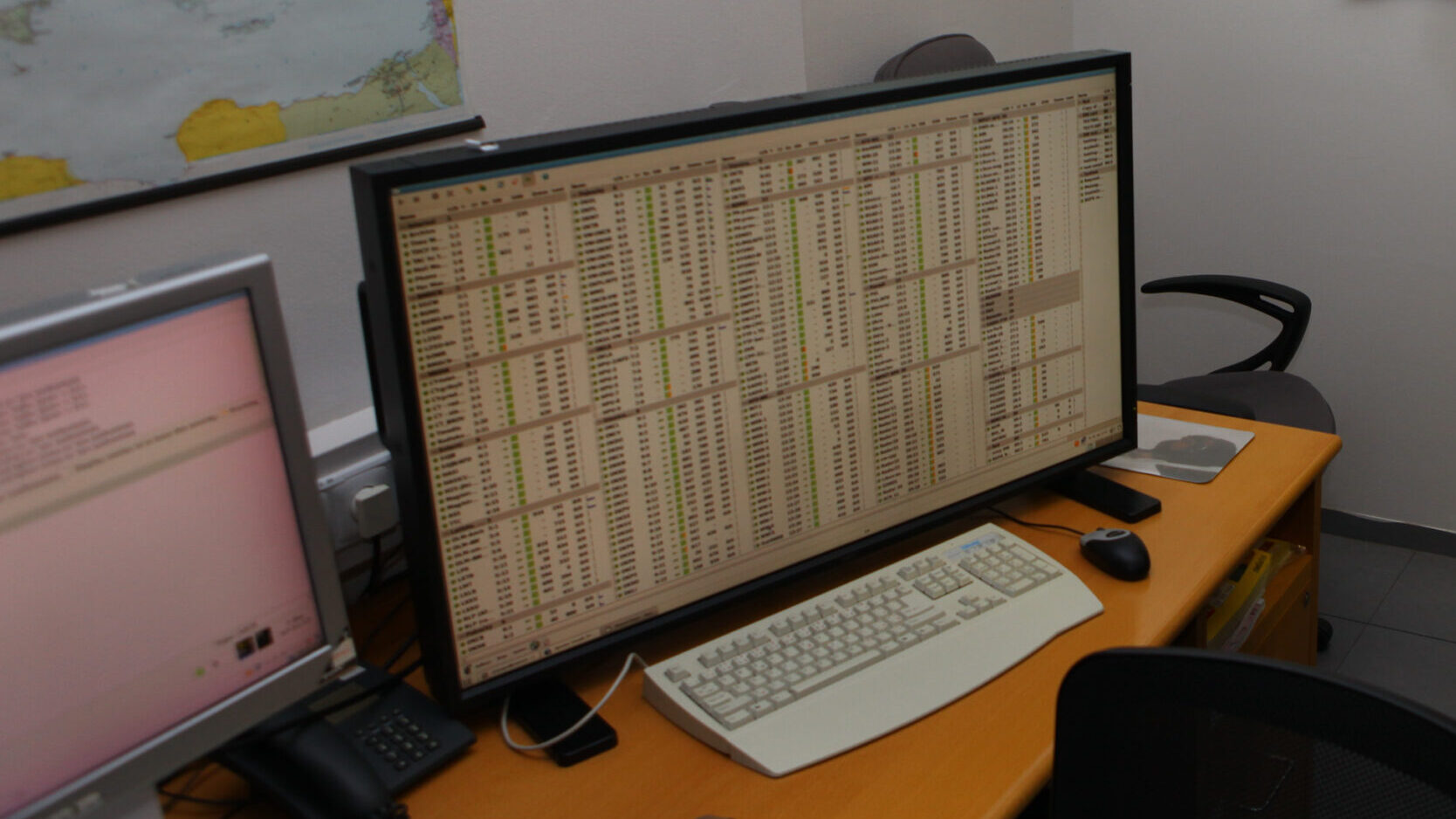
Moving Weather is a top-performance, low-maintenance data-switching system used by the majority of RTH centres (and many NMCs) around the world. It is fully ready for WIS 2.0 and the new paradigm of data publishing and subscribing while being perfectly functional in the GTS-like data push model.
Data switched by Moving Weather can be messages (identified by an abbreviated heading) as well as arbitrary files (identified by their name). Routing rules can easily specify which incoming data should be routed to which destinations. The data can be received and transmitted using a wide suite of communication protocols (mostly based on TCP/IP but also legacy stuff like faxes or even asynchronous lines).
An important functionality is the collection of reports from incoming messages and the compilation of new messages (in the BUFR, IWXXM, and TAC formats).
Moving Weather has a modern and easy-to-use interface.
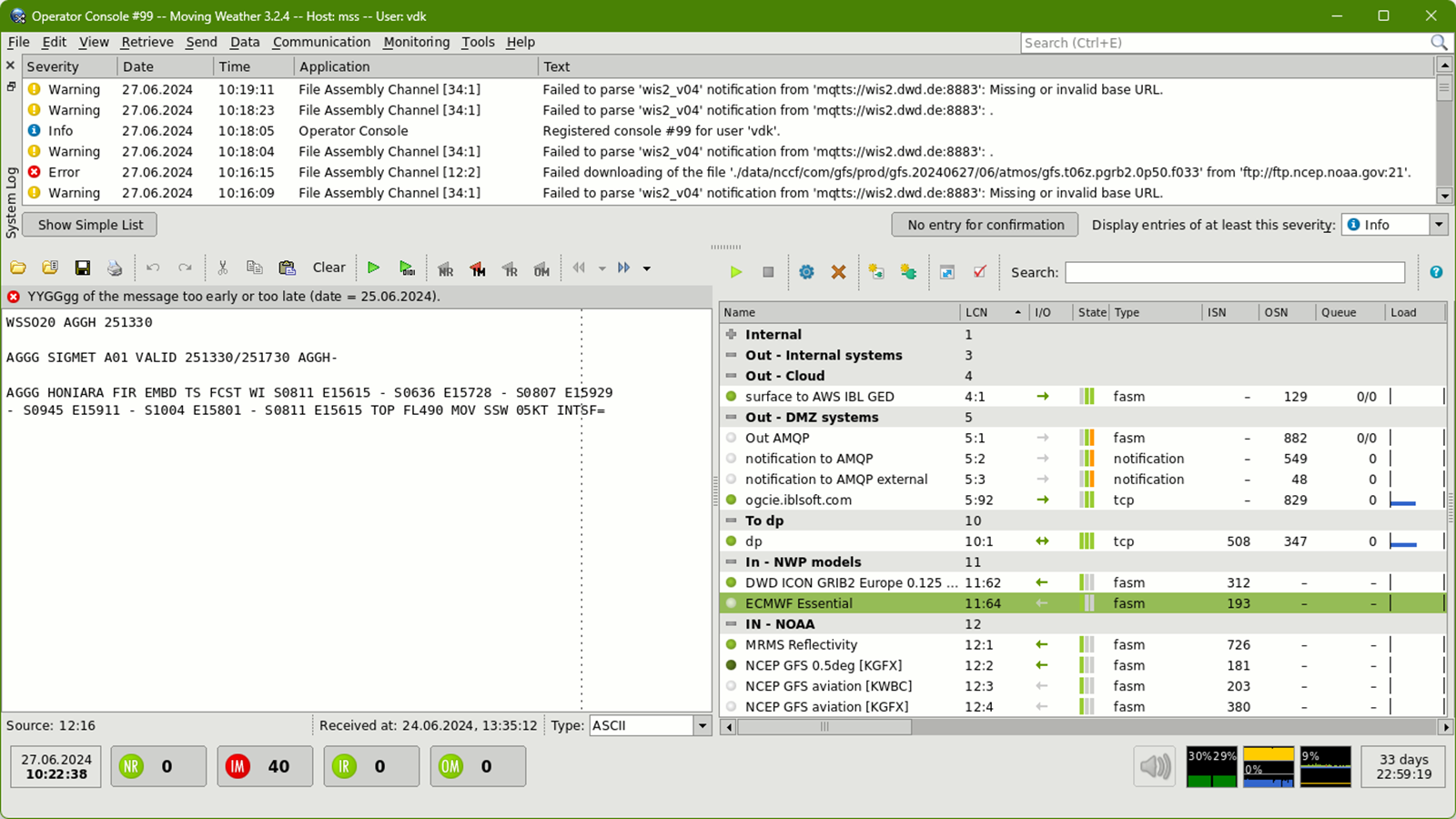
Moving Weather makes the migration to WIS 2.0 a non-issue. It supports the new paradigm of data exchange based on notifications and publish/subscribe protocols (MQTT/MQTTS) while it is still able to do the GTS-like data distribution, seamlessly interconnecting modern systems with legacy ones.
Highlights of the WIS 2.0 support in Moving Weather:
Publish-subscribe is the new paradigm for meteorological data exchange. The idea behind it is that a meteorological centre publishes notifications about data that it produces to a message broker (which is a miniature switching system on its own). Centres interested in this data can subscribe to queues within the broker based on specified topics, which will allow the broker to resend the notifications to such subscribers. The notifications contain information about how to download the data (or, in the case of small data, they can contain it directly in their payload).
Available publish-subscribe protocols in Moving Weather are MQTT(S) 3.1.1 and 5.0, AMQP(S) 1.0 (including digital signatures), and Amazon SNS/SQS (including role assuming). The supported notification formats are WIS 2.0 (JSON/GeoJSON based, bidirectional), Amazon S3 (input only), and custom (based on a textual template, output only).
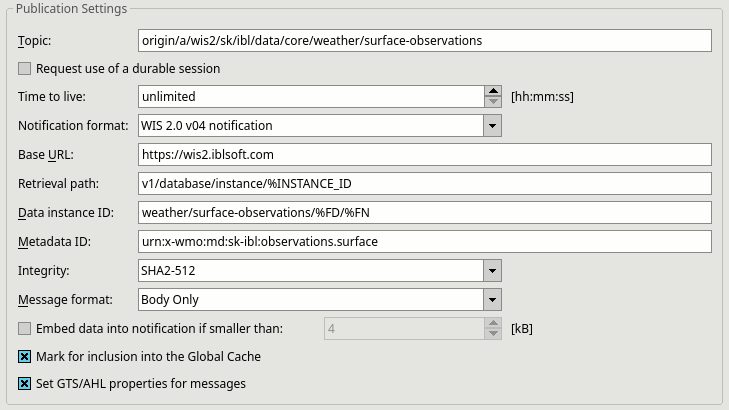
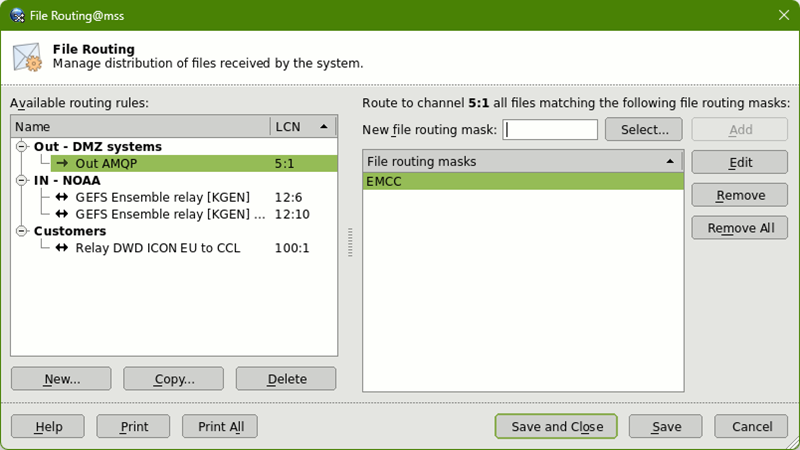
Moving Weather can store and forward not only WMO messages but also arbitrary files. The files are sorted on input into a configurable set of file database folders based on their names. File routing rules specify which files (from which database folders) should go to which output channels.
The switched files can be automatically renamed, using both regular expressions and wildcards, either upon reception or just before upload. They can also be preprocessed or postprocessed using custom-written programs (e.g. Python scripts).
Moving Weather can automatically extract reports of many types (SYNOP, SHIP, METAR/SPECI, TAF, PILOT, TEMP, CLIMAT, BUOY, etc.) from received messages and compile new messages out of the collected reports. The reports can be in the BUFR, IWXXM (incl. 2023-1), or TAC format.
Basic validity checks (DTG, station format, etc.) are done on extracted reports. Compilation of new messages is done according to predefined rules; the reception of RRx/CCx/AAx reports automatically triggers the compilation of respective RRx/CCx/AAx messages.
BUFR reports can use the traditional station IDs (TSI), or the WIGOS station IDs (WSI), with an automatic conversion between the two forms when needed.
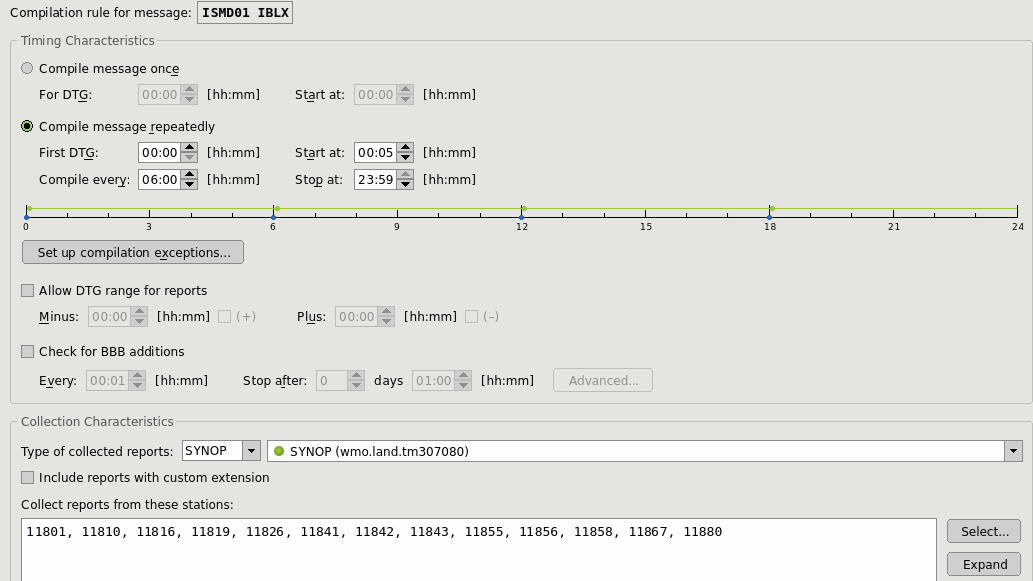
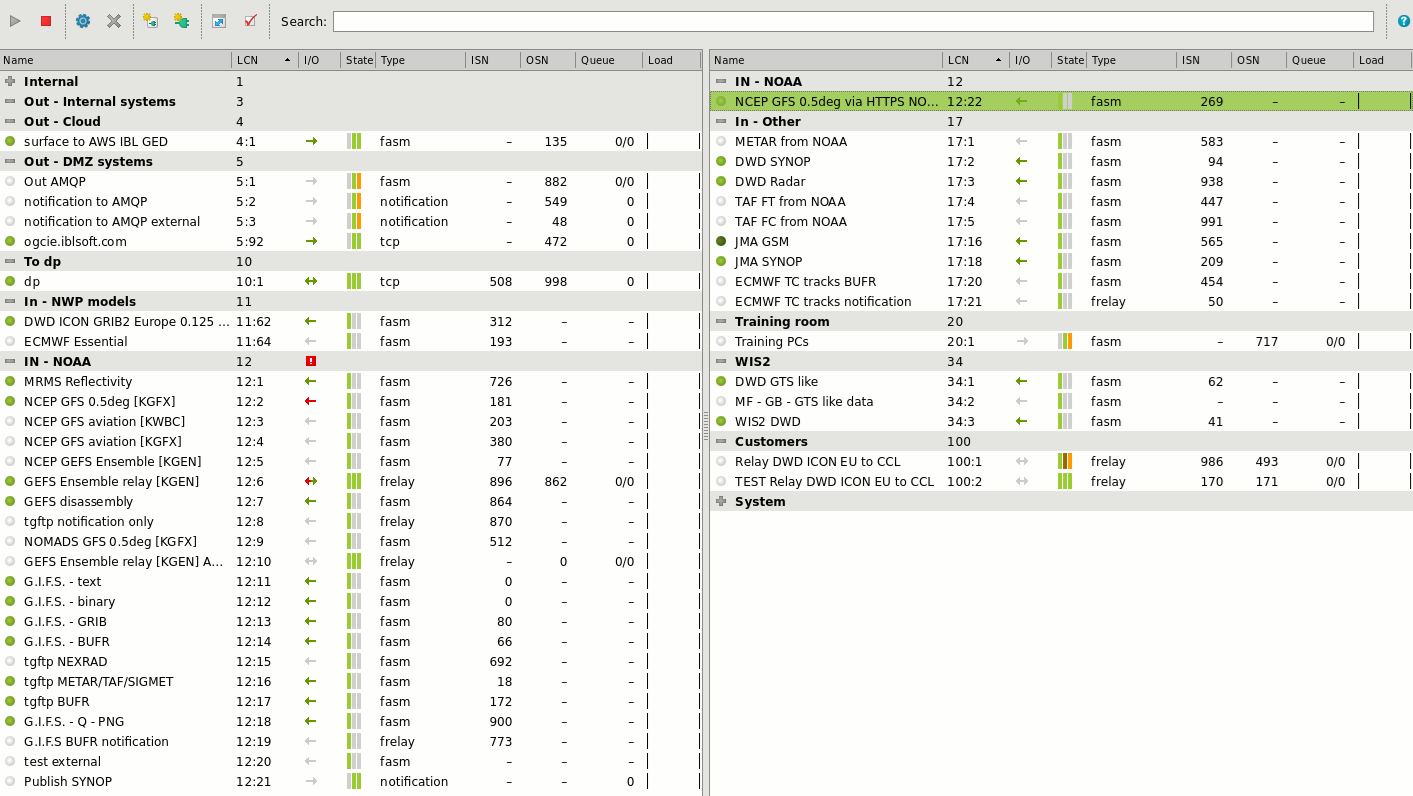
There are many types of data circuits and communication lines supported in Moving Weather:
The reception of BUFR, IWXXM, or TAC reports from predefined sets of stations can be monitored using a graphical display, which uses various colors to indicate present and missing reports. BUFR reports can be identified using the traditional station IDs (TSI) or the WIGOS station IDs (WSI). Automatic notifications about missing reports can be sent to originating stations via AMHS, AFTN, or e-mail.
Also, the presence of entire messages can be monitored, with a configurable alarm period. For missing messages, automatic requests can be issued.
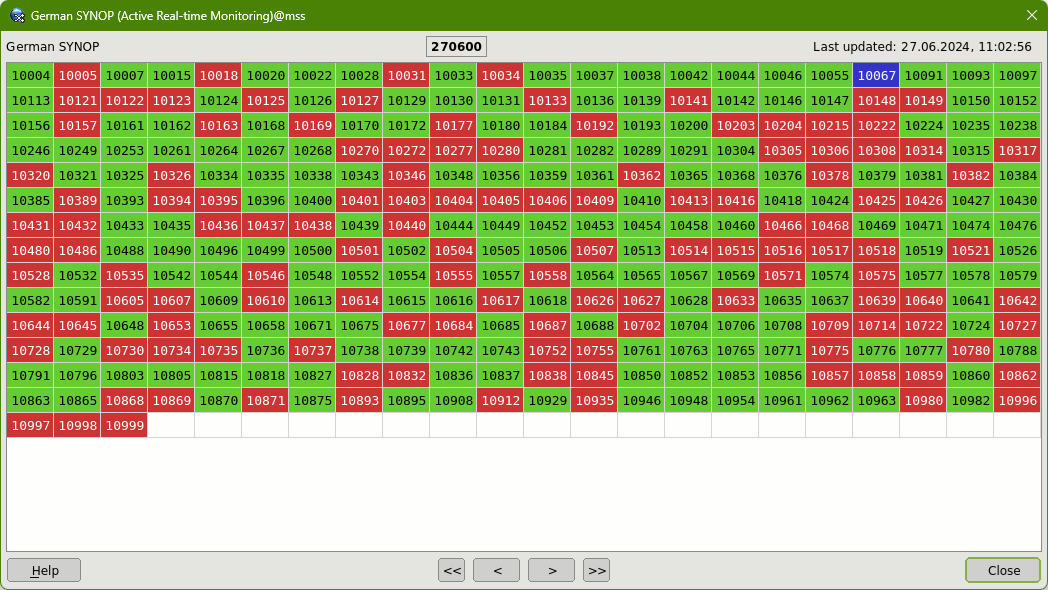
With Moving Weather, your organization can seamlessly support the modern BUFR and IWXXM data formats. These are, nowadays, the principal formats in which meteorological data is to be disseminated, even though many legacy systems still need the traditional TAC format.
Moving Weather can process messages and reports in all three formats. Besides the report collection, message compilation, and monitoring (all described above), it supports the conversion of received and/or compiled messages from BUFR/IWXXM to TAC and vice versa. This makes it possible for legacy systems to be utilized until upgraded or replaced by being able to provide TAC content for BUFR/IWXXM messages.
BUFR and IWXXM messages can even be compiled from report data stored in an external SQL database (from which they are retrievable using SQL SELECT). Similarly, report data decoded from received messages (BUFR, IWXXM, TAC) can be ingested into an external SQL database (using SQL INSERT).
The support of BUFR and IWXXM in Moving Weather is achieved through the Recode Weather module. This module is easily extensible to support future codes, new templates approved by WMO, or national and custom templates.